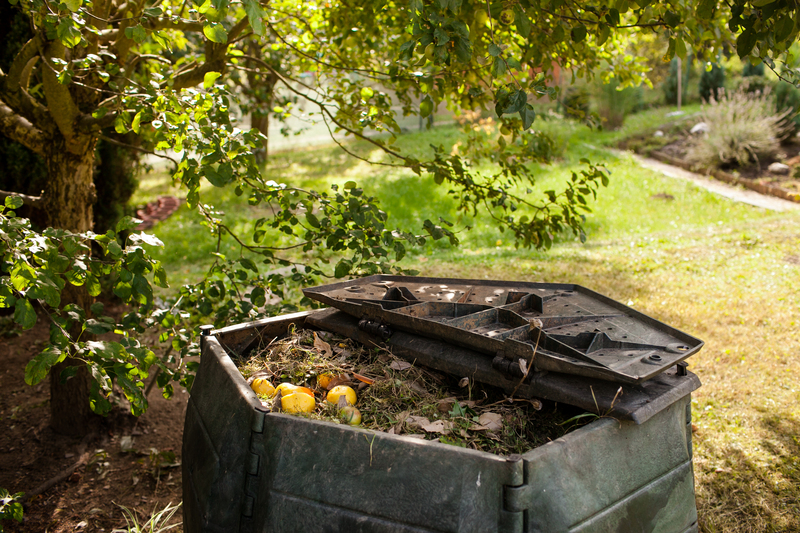In today's rapidly evolving world, the search for sustainable and renewable energy resources has become paramount. One of the most intriguing solutions is transforming waste into energy. This innovative approach not only addresses the looming waste management issues but also contributes to the global quest for clean energy. Let's delve into how waste can be utilized as a renewable energy resource, its benefits, methods, and future potential.
Understanding the Concept of Waste-to-Energy (WtE)
The idea of converting waste to energy is not entirely new. However, recent technological advancements have significantly improved its efficiency and feasibility. Waste-to-Energy (WtE) involves the process of generating energy in the form of electricity or heat from the primary treatment of waste.

Types of Wastes Used for Energy Production
- Municipal Solid Waste (MSW): Everyday household waste, which includes organic material, plastics, paper, and more.
- Industrial Waste: By-products from industrial processes that can be collected and converted.
- Biomass Waste: Agricultural residues, forest debris, and food waste that can produce bioenergy.
- Sludge: By-product of wastewater treatment processes containing biosolids.
Methods of Waste-to-Energy Conversion
Several technologies are used to convert waste into energy, each with its unique process:
- Incineration: This is the most common method where waste is burned at high temperatures, producing steam-driven turbines that generate electricity.
- Gasification: A process that converts organic or fossil fuel-based material into carbon monoxide, hydrogen, and carbon dioxide. This is achieved by reacting the material at high temperatures with a controlled amount of oxygen.
- Pyrolysis: Similar to gasification, but this process occurs in the absence of oxygen, breaking down waste into synthetic gas and bio-oil.
- Anaerobic Digestion: This method uses microorganisms to break down biodegradable material in the absence of oxygen, producing biogas that can be used for heating, electricity, and as fuel.
Benefits of Waste-to-Energy
Using waste as an energy source comes with a multitude of advantages:
Environmental Impact
- Reduction in Landfill Use: Converting waste into energy minimizes the volume of waste being directed to landfills, thereby conserving land and reducing potential pollution.
- Greenhouse Gas Mitigation: Waste-to-energy processes reduce methane emissions from decomposing waste, which is a potent greenhouse gas.
- Conservation of Natural Resources: By utilizing waste, the exploitation and depletion of natural resources are minimized.
Energy Production
- Reliable Energy Source: Unlike solar and wind power, waste is continually produced, making it a more consistent and reliable energy source.
- Decentralized Energy Production: Waste-to-energy facilities can be established near urban areas where waste is generated, reducing transportation costs and increasing local energy independence.
Economic Benefits
- Job Creation: Developing and maintaining WtE plants create numerous jobs in engineering, management, and operations.
- Energy Savings: Local energy production can result in lower transportation and administrative costs.
Challenges and Considerations
While waste-to-energy presents numerous advantages, there are challenges and factors to consider:
- Air Pollution: Incineration can release pollutants if not properly managed.
- Cost: Setting up WtE facilities can be capital-intensive.
- Public Perception: There might be resistance due to the misunderstanding of the processes involved.

The Future of Waste as a Renewable Energy Resource
The role of waste in renewable energy is set to grow significantly as technology advances and public awareness increases. Potential advancements include:
- Enhanced efficiency and conversion rates
- Greater acceptance and integration with existing energy grids
- More stringent regulations ensuring environmental safety
A future where waste contributes significantly to solving the global energy crisis is both promising and feasible. Through continuous innovation and robust policy frameworks, waste-to-energy can emerge as a cornerstone of the sustainable energy infrastructure.
Conclusion
The exploration of waste as a renewable energy resource exemplifies the potential of innovation in sustainable practices. By embracing waste-to-energy technologies, society can simultaneously combat pollution, decrease dependence on fossil fuels, and provide a more sustainable path forward for energy production. With its dual ability to manage waste and produce energy, waste-to-energy stands as a critical endeavor in the march towards a more sustainable future.
In sum, waste material, once considered a burden, is fast becoming a valuable resource in the modern world. As these technologies develop further, their role in both waste management and energy production is poised to expand, underscoring the importance of continuing research and investment in this area.